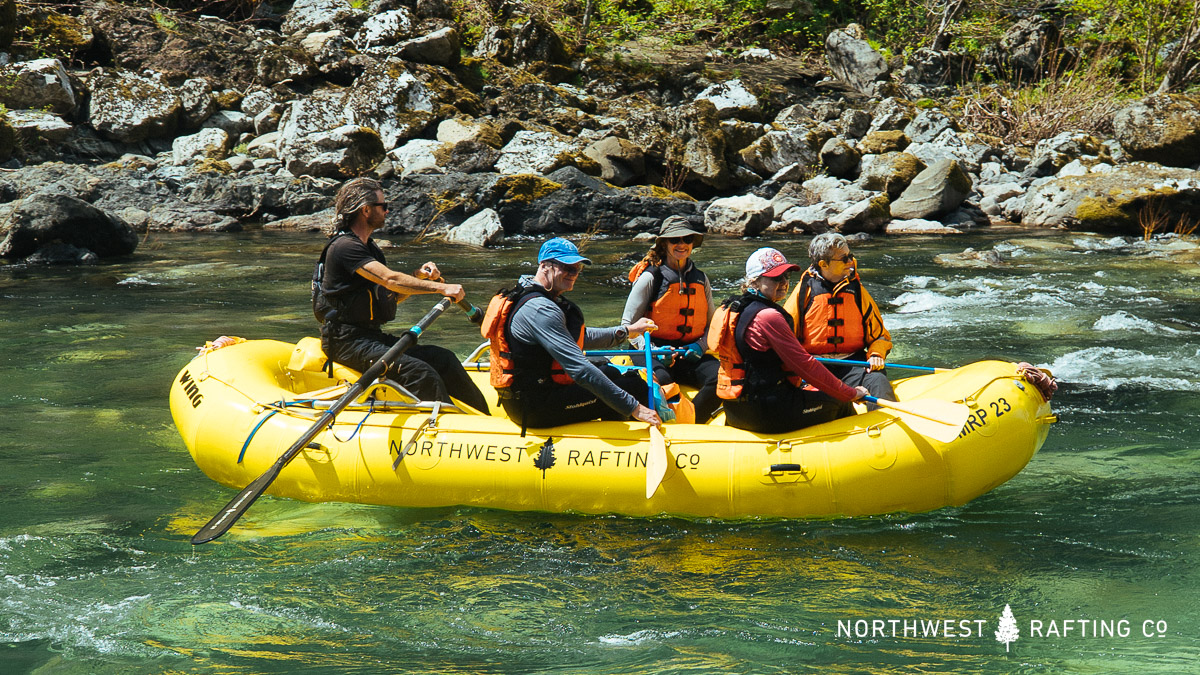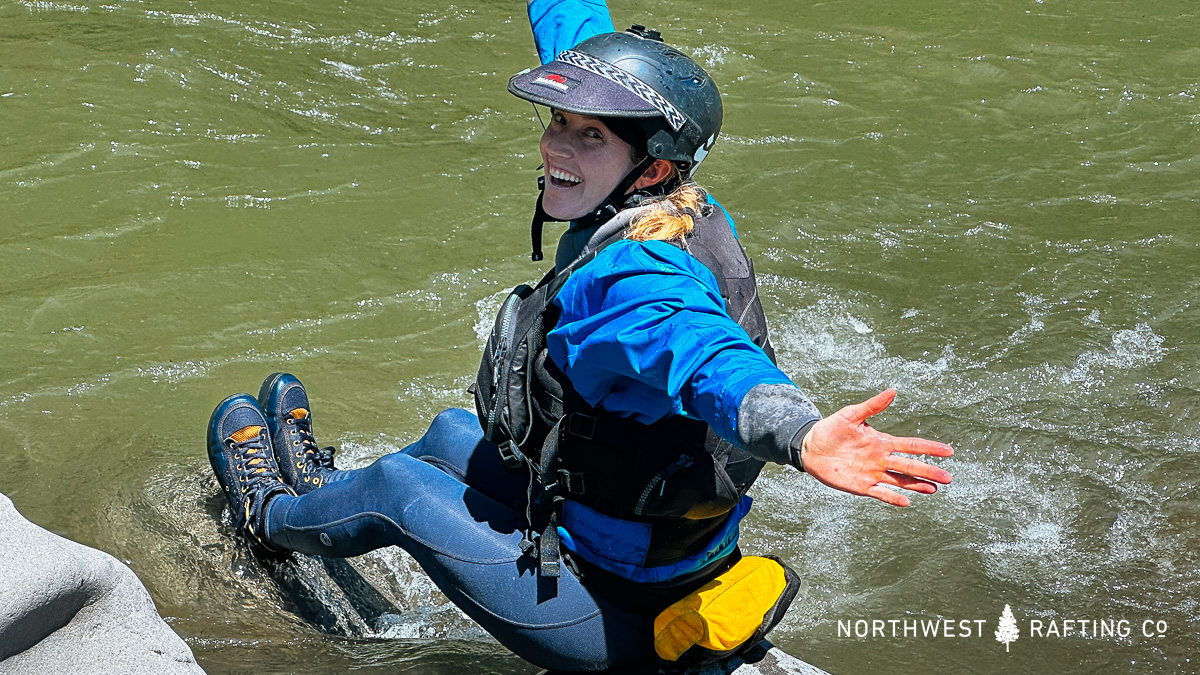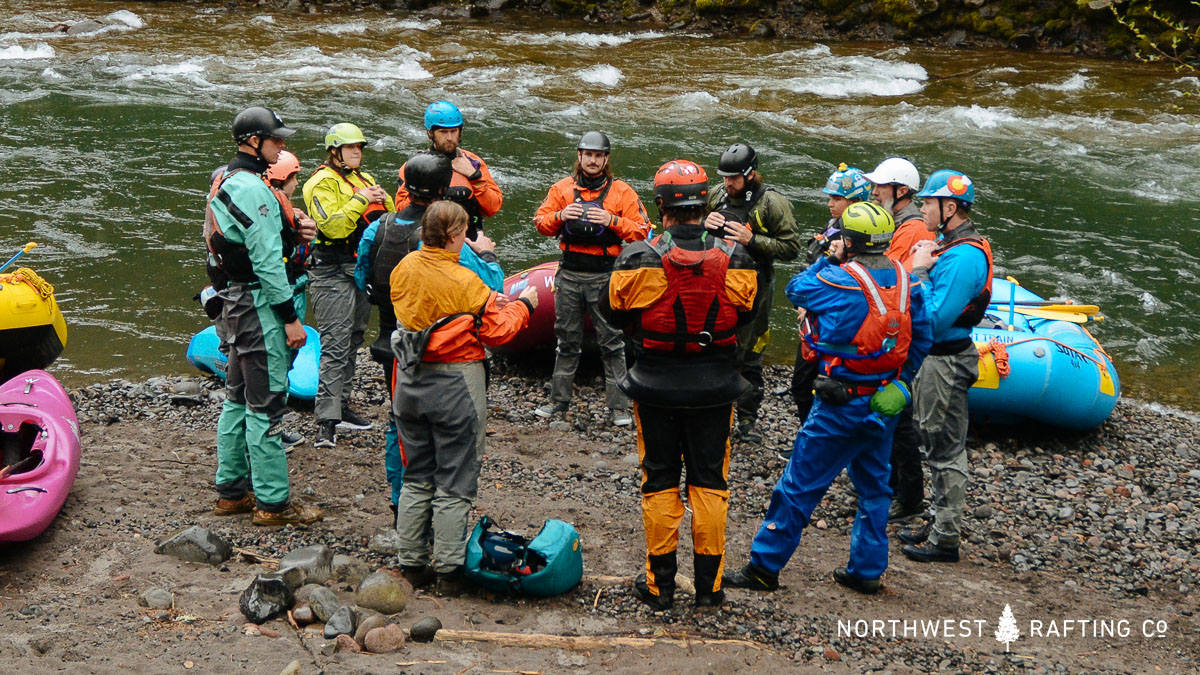Planning a spring or fall rafting adventure? Staying warm on the river is essential for both comfort and safety—but figuring out whether to wear a wetsuit or a drysuit can be confusing. In this guide, we’ll compare the pros and cons of each, so you can confidently choose the right gear for your next cold water rafting trip.

What Is a Wetsuit?
Made from neoprene, a wetsuit traps a thin layer of water between your body and the suit. Your body heat warms this layer, helping you stay warm even when wet. A farmer john style wetsuit is often combined with a fleece shirt and paddle jacket to maximize warmth while allowing for freedom of movement.
Wetsuit Pros for Rafting
- Durability: Wetsuits tend to be tough and long-lasting, making them ideal for rugged river environments
- Less Restrictive: No tight neck or wrist gaskets which can be restrictive and cause rashes
- Better Swim Performance: If you go for a swim, wetsuits give you a bit of extra buoyancy and freedom of movement
- On-the-Fly Layer Adjustment: It is easier to throw on an additional fleece layer when wearing a wetsuit than it is in a drysuit.
Wetsuit Cons
- Not Fully Dry: You’ll get wet—but you’ll generally stay warm enough as long as you’re moving
- Can Be Chilly: In very cold conditions you can get cold
- Tricky for Bathroom Breaks: Removing the suit can be time-consuming and cold

What Is a Drysuit?
A drysuit is made from waterproof material and features tight gaskets at the neck and wrists to keep all water out. You stay dry and rely on your thermal layers underneath for warmth.
Drysuit Pros for Rafting
- Stay Dry: No water gets in allowing you to feel more comfortable
- Excellent for Very Cold Conditions: Ideal for icy water, rain, or windy days as you are dry inside your suit
Drysuit Cons
- More Complicated: Drysuits can be tricky to get on and off—especially with cold fingers
- Delicate Zippers and Seals: One tear or a faulty zipper can turn a drysuit into a liability
- Uncomfortable Gaskets: The snug seals at the neck and wrists take getting used to—and they’re not for everyone
- Can Overheat: On warmer days, drysuits can get too hot as they have no ventilation
- Potential Hazard: If your zipper, neck seal, or fabric breaks the drysuit can fill with water making it very difficult to swim or self-rescue

Why Thermal Protection Matters
Wearing the right thermal protection during spring and fall rafting trips is about more than comfort—it’s a critical safety measure. Both wetsuits and drysuits serve as essential personal protective equipment (PPE) in cold conditions. Falling into cold water without proper gear can lead to an immediate cold shock response. According to the American Canoe Association, if the water temperature is below 60°F or the combined air and water temperature is below 120°F, thermal protection is strongly recommended. Whether you opt for a wetsuit or a drysuit, wearing the right gear helps protect you from cold water immersion and prepares you for the unexpected.
Final Thoughts
Choosing between a wetsuit and a drysuit for rafting isn’t about which is better—it’s about which is right for you and the specific conditions of your trip. Spring and fall on the river can be absolutely magical with the right gear. Make your choice based on weather, water temps, personal comfort, and how much you’re likely to swim.
Still unsure? Give us a call in the office, we would be happy to chat and help you make a decision.